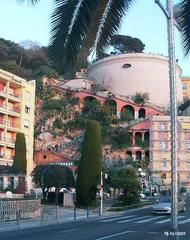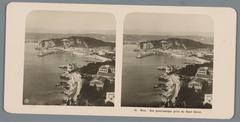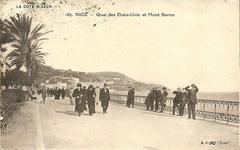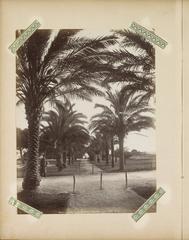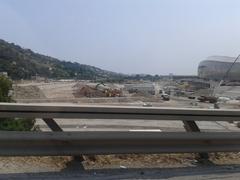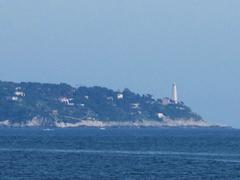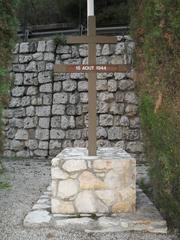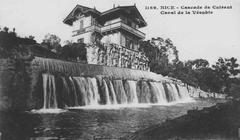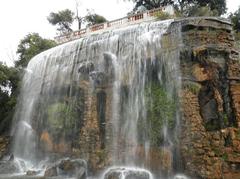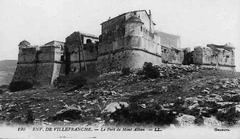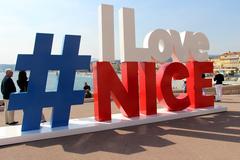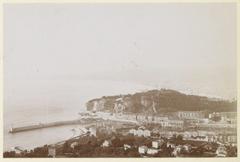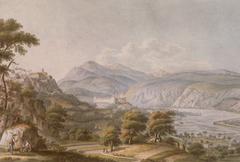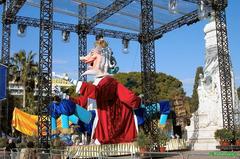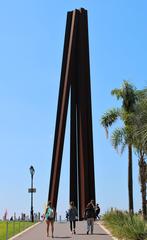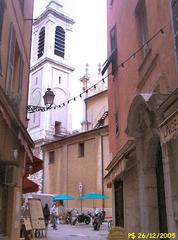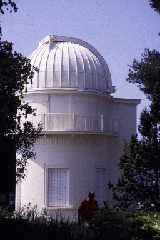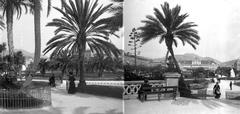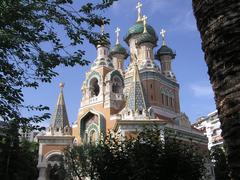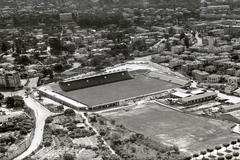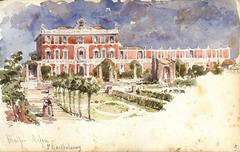
Visiting Cascade du Château in Nice: Hours, Tickets, and Travel Tips
Publication Date: 24/07/2024
Introduction
Nestled atop the historic Castle Hill in Nice, France, the Cascade du Château is an enchanting artificial waterfall that offers a tranquil escape amidst breathtaking views of the Mediterranean Sea and the Baie des Anges. This iconic landmark, with its lush greenery and cascading waters, stands as a testament to the city’s rich history and innovative spirit. The hill itself, known as Colline du Château, has been a strategic and cultural focal point since ancient times, dating back to Greek colonization around 500 BC. Over the centuries, the site has evolved from a formidable medieval fortress to a serene public park, attracting visitors from around the world (Best of Nice Blog). Today, the Cascade du Château remains a must-see attraction, embodying the charm and historical significance of Nice (French Riviera Traveller).
Table of Contents
- History of Cascade du Château, Nice, France
- Visitor Tips
- Cultural and Recreational Hub
- FAQ
- Conclusion
History of Cascade du Château, Nice, France
Early Beginnings and Strategic Importance
The history of Castle Hill, or Colline du Château, dates back to ancient times. The Greeks were the first to colonize the hill around 500 BC, recognizing its strategic importance due to its natural fresh water spring and elevated position, which provided maximum visibility of potential invaders (Best of Nice Blog). The hilltop settlement was named Nikaia, after the Greek goddess of victory, Nike.
Medieval Fortifications
By the 11th century, the hill had evolved into a formidable medieval fortress, complete with a grand chateau, a cathedral, and a bustling village encircled by massive walls (Best of Nice Blog). The chateau was considered one of the most impregnable fortresses on the Mediterranean coast, attracting numerous attacks over the centuries. The hilltop village eventually became too crowded, leading to the relocation of the town down the hill to what is now known as Old Nice.
Destruction and Transformation
The chateau’s military significance continued until the early 18th century. In 1706, during the War of the Spanish Succession, the fortress was destroyed by the troops of Louis XIV (Wikipedia). The destruction marked the end of the hill’s military role, and it lay in ruins for over a century.
In 1822, the King of Sardinia transformed the hill into a public garden. Botanists replanted the terrain with Aleppo pines, cypresses, oaks, and various hardwood trees (French Riviera Traveller). This transformation coincided with Nice’s emergence as a popular winter holiday destination for European aristocracy.
The Cascade and Modern Developments
One of the most significant additions to Castle Hill was the creation of the Cascade in the late 19th century. The waterfall was inaugurated on June 27, 1885, to commemorate the new water system that brought water from the Vesubie valley, approximately 50 kilometers north of Nice, to the Cascade and the city (French Riviera Traveller). The Cascade, with its lush and refreshing oasis, became a major attraction, encouraging the growth of more vegetation and drawing more visitors to the park.
Archaeological Significance
Archaeological excavations have revealed the hill’s layered history, from its Greek beginnings to its medieval fortifications. The remains of the original chateau walls, built between the 13th and 14th centuries, can still be seen at the top of the hill (Explore Nice Côte d’Azur). Visitors can also find stone mosaics paying homage to the chateau’s Greek origins and the ruins of the original Cathedral of Sainte-Marie, which was replaced by the Sainte-Réparate Cathedral in Vieux Nice (Best of Nice Blog).
Visitor Tips
How to Get There
For those planning a visit, the park is accessible by foot from Old Nice or Place Garibaldi, or via a free elevator located near the Hotel Suisse (Best of Nice Blog). The park is open year-round, and access is free of charge (Provence Lovers).
Best Times to Visit
To avoid the crowds and the heat, it is recommended to visit in the morning or mid-afternoon, especially outside the peak summer months.
Accessibility
The park is family-friendly, with several playgrounds and picnic areas. Visitors can enjoy a Provencal-style picnic or grab refreshments from the on-site snack bar (Provence Lovers). However, it is important to note that not all areas of the park are accessible to people with reduced mobility, and the ground can be uneven in places (Provence Lovers).
Cultural and Recreational Hub
Today, Castle Hill is a vibrant public park and a ‘must-see’ destination for tourists visiting Nice. It offers stunning panoramic views of the Baie des Anges, the Promenade des Anglais, and the Mediterranean Sea (Wikipedia). The park features a large playground, sports center, and several observation points equipped with telescopes for visitors to admire the scenic beauty (Explore Nice Côte d’Azur).
The Cascade remains one of the park’s main attractions, providing a refreshing mist and a picturesque backdrop for photos (Inspire Ambitions). The park also hosts the daily noon-time cannon firing, a tradition that dates back to the chateau’s military days (Best of Nice Blog).
FAQ
When is the best time to visit Cascade du Château?
The best time to visit is in the morning or mid-afternoon, especially outside the peak summer months, to avoid crowds and heat.
How much do tickets cost for Cascade du Château?
Access to Castle Hill and the Cascade is free of charge (Provence Lovers).
Conclusion
The Cascade du Château is more than just a picturesque waterfall; it is a symbol of Nice’s storied past and a beloved destination for both locals and tourists. From its ancient Greek origins to its transformation into a public park, Castle Hill has continually adapted, offering a unique blend of history, natural beauty, and recreational opportunities. Whether you are drawn by the panoramic views, the refreshing mist of the waterfall, or the rich archaeological findings, a visit to the Cascade du Château promises a memorable experience. Access is free, making it an accessible and enjoyable destination for all. To stay updated on more travel tips and related posts, don’t forget to download our mobile app Audiala and follow us on social media (Best of Nice Blog, Provence Lovers).
References
- Best of Nice Blog, 2022, https://www.bestofniceblog.com/history-nice-france/the-nice-chateau-castle-hill/
- Wikipedia, 2022, https://en.wikipedia.org/wiki/Castle_of_Nice
- French Riviera Traveller, 2022, https://frenchrivieratraveller.com/Nice/Sights/colline-du-chateau.html
- Explore Nice Côte d’Azur, 2022, https://www.explorenicecotedazur.com/en/info/parc-de-la-colline-du-chateau-en/
- Provence Lovers, 2022, https://provencelovers.fr/en/visit-parc-colline-chateau-nice/
- Inspire Ambitions, 2022, https://inspireambitions.com/castle-hill-nice-france/


